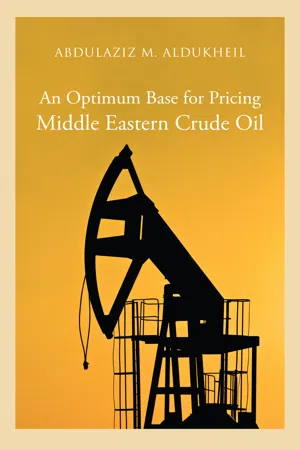Chapter 1
The Theory of Exhaustible Resources
In this chapter, I will trace the evolution of the theory of exhaustible resources. The chapter is divided into three sections. The first outlines the early classical theories. This will include primarily David Ricardo’s rent theory, followed by Alfred Marshall’s restatement of the theory.
The second section presents the early and basic formulation of the optimal utilization theory of exhaustible resources, primarily the contribution of Lewis C. Gray (1914) and Harold Hoteling (1931). Finally, refinement and extension of the basic theory will be discussed.
The Early Classics and the Pricing Problem of Natural Resources
In the early days of economic science, rent was distinguished from other forms of income by defining it as the periodic return from the use of land. The Physiocrats regarded the fertility of nature as the one possible explanation of a surplus of production, above its necessary cost.1
This correlation between rent as income and land as its source did not go unchallenged. Adam Smith disputed the contention that agriculture and mining were the sole sources of the wealth of nations. He treated rent as a differential surplus and hence price determined: ‘High or low wages and profit are the cause of high or low prices; high or low rent is the effect of it.’2 The theory of rent found its most thorough logical development in the work of Ricardo, whose 1815 essay begins with an enunciation of the famous theory of differential rent, which has come to be known as the Ricardian Theory of Rent.3 In fact, Ricardo acknowledges his indebtedness to Malthus’ pamphlet ‘An Inquiry into Rent’, which was published three weeks before Ricardo announced his theory.4
Ricardo modified the economic concept of land as the source of rent payments and thus defined rent as that part of the produce of the soil which is paid to the owner for the use of the original and indestructible capacities of the soil. So, in accordance with Ricardo’s formula, in a strict sense, we have only to consider as rent the price of the use of the original and indestructible forces of the land. It cannot, therefore, be conceived of as recompense for any sort of productive activity, of either a creative or a maintaining character.5
Thus, the imperishability of the basis of rent is an essential assumption for the existence of rent in the Ricardian model. Ricardo did not hesitate to extend his doctrine of rent to all classes of land, yet he implied that modifications must be made before it could be applied to mineral lands. His two chapters on rent in The Principles should be studied together. In Chapter 2, he states that ‘the compensation given for the mine or quarry is paid for by the value of the coal or stone which can be removed from them and has no connection with the origin and indestructible powers’.6
Yet in Chapter 3 he writes:
The apparent inconsistency here is explained as follows. In Chapter 3, which is entitled ‘The Rent of Mines’, Ricardo is concerned only with the return on mines due to their original and indestructible qualities, He was assuming-though he did not make it clear-that the compensation paid for the mineral removed, mentioned in Chapter 2, had already been deducted.8 Ricardo believed that mine royalties had a dual character that they were partly a payment for minerals removed and partly a differential return due to the superior location or the greater fertility of particular mines.
So, in the early classics, the whole theory of pricing was based on the thesis that the price of the product of natural resources is settled by the cost of capital and labour which is necessary to get the last unit of product from a given area. It has been inferred from this thesis that the price of the product depends entirely on the cost of labour and capital namely, on the marginal use of capital and labour on a given land and that, therefore, the scarcity of land provides no exception to the general rule that prices of products are determined by the cost of labour and capital.9 This theory culminated in Ricardo’s famous thesis that rent is not an element of the cost of production or the price of the product.
This would put land in a special position as a factor of production, and a basis is thus provided for a differentiation between rent and the price of the other factors of production. As a result, the whole of theoretical economics is affected, as a result perhaps most clearly seen in Marshall’s work.10 Marshall regards as cost, in the real sense, only the ‘effort and sacrifices’ that are required for production, and as monetary cost of production only the price which must be paid to elicit the requisite amount of these efforts and sacrifices. Of the factors of production, labour and capital alone represent the outcome of efforts and sacrifices. Hence, these alone can be taken into account in calculating the cost of production. The price of the use of land is excluded by the very definition of cost.
With this starting point, the theory of the pricing of the factors of production is bound to assume, on the one hand, that the supply of labour and capital really depends upon the prices that are offered for the relevant effort and sacrifice and rise with the prices. On the other hand, ‘on the margin’ no price need be paid for the us...
